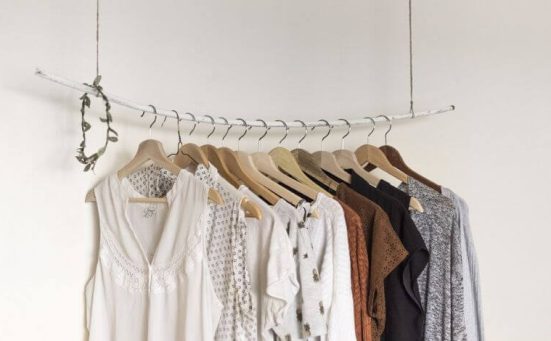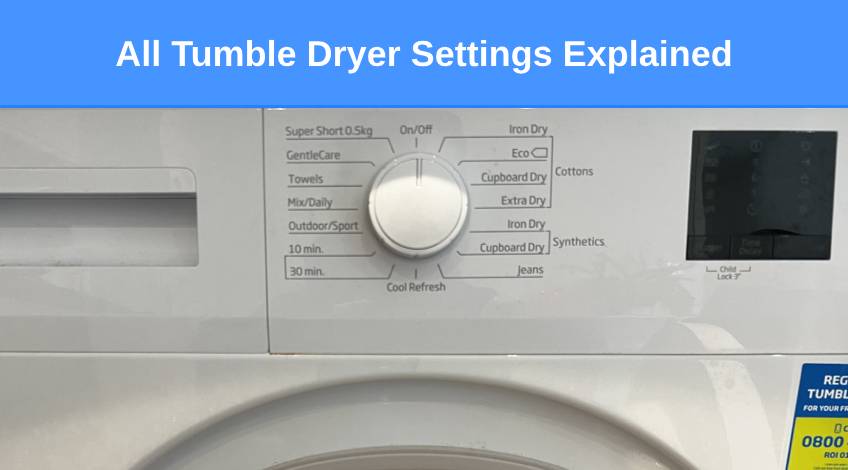
All Tumble Dryer Settings Explained
Are the various buttons and cycles on your new tumble dryer confusing you? We understand, all you want to do is get your laundry dry and there are so many choices, you don’t know which one to use.
If you’ve recently bought a new tumble dryer and are confused as to what all the various settings and cycles are best used for, this is the article for you.
In this article we look at all of the many and different cycles and settings found on modern tumble dryers and explain when and how to use them.
It’s Best To Do This First
The first thing you should do with any new appliance is read the user manual to familiarise yourself with how it operates. This should have been included with the appliance when it was delivered, but if you don’t have one, you can go online and find it.
Most user manuals will have a guide to all of the various settings and cycles and a brief description on what they do. However, we know that not everyone enjoys reading handbooks or user manuals which is probable why you’re here in the first place.
Keep reading as we explain each setting and cycle found on a modern tumble dryer.
Tumble Dryer Settings
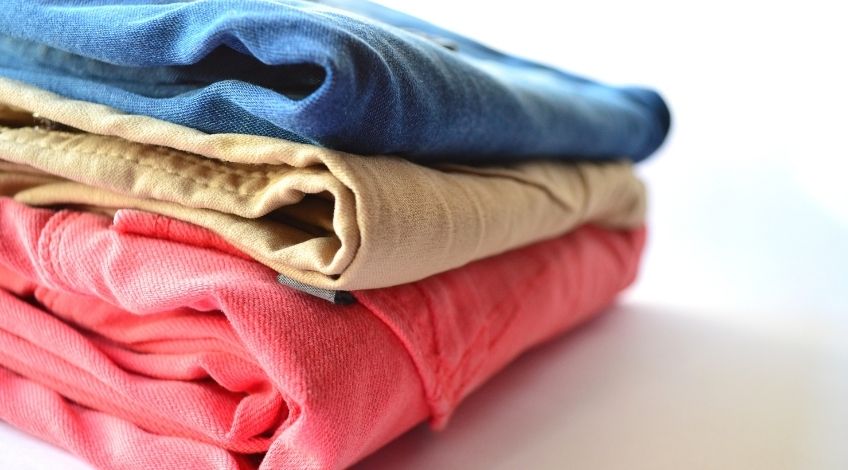
Before we get started, it’s important to note that drying times for the various settings can differ from manufacturer to manufacturer. Some will be longer or shorter and the temperatures of each setting can vary too.
We recommend giving each setting a trial run and timing how long it runs for. You might also want to check the specific temperatures for each setting on your model of dryer (this can usually be found on the manufacturers website or in the user manual).
Control Lock/Child Lock
Most tumble dryers will have a control lock or child lock which is designed to prevent any of the buttons being interfered with and also prevents the door from being opened mid-cycle.
It’s an easy and safe way to prevent your children from fiddling with your dryer while you’re busy doing one of the many other chores you need to do.
Timed Dry/Delay Timer
This setting is ideal if you want your laundry to be subjected to the heat and rough and tumble of the dryer for a set amount of time. The usual options range from 15 to 90 minutes and once you’ve selected the duration, the dryer will start and run for that amount of time.
You should only use this setting on fabrics that are robust enough to endure high temperatures. Clothes liable to get damaged if subjected to too much heat should not be dried using this setting.
No-Heat/Air Dry/Air Fluff/Refresh Setting
This setting simply spins your laundry in the drum but doesn’t use any hot air. The air that blows through your clothes in this setting is at room temperature. This setting lives up to the title of “tumble dryer” as the drying is achieved through the tumbling motion and doesn’t rely on heat.
This setting isn’t used to dry clothes, it’s more for freshening your clothes. It’s also great for softening stiff jeans, blankets, bed sheets, etc. This is why it’s also sometimes called “air fluff”.
You can often use this setting for clothes that are “dry clean only”although you should check the wash care label first. It’s not a setting to use on items with embellishments or delicate items like silk or woollen garments because the tumble action could damage them.
Delicate/Gentle Cycle
As the name implies, this is the least intense cycle found on a dryer and is ideal for delicate, fragile fabrics. The wash care label will tell you which items should be dried using this cycle.
They typically include items made from lace, linen, chiffon, elastane, spandex or lycra. Basically any item that has the symbol with a square with a circle inside with a dot in the middle.
This cycle uses low heat and a gentle spin which will not damage the above items or cause them to lose colour, fade, rip or weaken the fabric.
It is worth remembering however, that on some dryers the delicate cycle can reach temperatures of 52 C (125 F) which could be too hot for some delicate items. We would recommend checking the garments every 10 minutes or so just to ensure they are not getting too hot.
You should never overload the drum when using the delicate setting; in fact, it is recommended that you never fill the drum to more than ½ its capacity when drying delicate items.
Another good tip when washing and drying delicate items is to use a mesh bag to prevent them becoming caught up with other items and damaged.
On some appliances you could find the following under the delicate setting;
- Synthetics
This is designed for synthetic fabrics like polyester and uses a low temperature that prevents the fabric from becoming damaged. - Synthetics Easy Iron
This setting is very similar to the synthetics cycle but runs a cool cycle towards the end of the cycle to ensure the garments are ready to iron as soon as the cycle is completed. - Silk
This is a rare cycle which is not found on many dryers. This is because silk is so delicate. However, some dryers have a silk setting which can be used to dry silk garments at extremely low temperatures.
Wrinkle-Control/Permanent Press/Wrinkle-Resistant Setting
This is a fairly new addition to the settings on offer on modern tumble dryers. It is designed to prevent your garments from becoming wrinkled.
Used on clothes made from cotton, hemp and linen, this setting uses a medium heat setting with a cool down period at the end of the cycle. It is also a good choice for items made from synthetic fabrics and blended fabrics which are typically designed to have less wrinkles.
This setting is designed to dry the clothes in such a way as to not cause wrinkles or creases which means there’s no need to use the iron.
This only works however, if you hang the garments immediately after the cycle has completed. This is because if they are left in a heap in the drum they’re likely to get creased.
Anti-Crease/Wrinkle Prevent Setting
This should be used to prevent items that have already been dried from creasing. It works by turning the drum intermittently to stop the garments from setting any creases as they are frequently moving.
Heavy Duty/Named Cycles
The heavy duty cycle or the named cycles (typically jeans, towels, bedding etc) are designed for drying fabrics that can withstand high temperatures and high spin speeds.
You can dry items such as towels, bathrobes, jeans, blankets, comforters, tablecloths and thick coats. However, some caution should be exercised when drying coats as some have synthetic fur, delicate lining or other embellishments that could easily become damaged.
These are the cycles that use the most energy as they have to work the hardest and for the longest time to get these thicker items dry. If you find some items come out after this cycle feeling damp, they might need to be dried using a different setting.
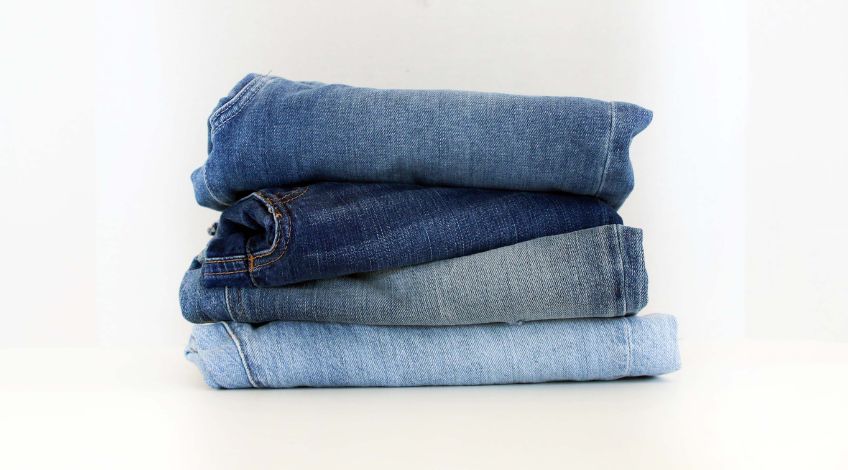
Jeans
The jean cycle is obviously the best cycle to choose for drying jeans and other denim items. This will protect them against shrinkage, colour fade/bleed and general damage. However, it’s always best practice to turn jeans inside out when washing and drying them.
Shirts
The shirts setting dries shirts on a low heat setting which is best for drying shirts. However, not all shirts can be tumble dried which means it’s important that you check the wash care label before putting any shirt in the dryer.
Automatic/Mixed Load
This is the most common cycle and the one that’s the best for drying many clothes. It typically uses a medium heat with a high speed spin to completely dry cotton, polyester, linen and mixed fabrics.
However as with all cycles, you should check the wash care label as some of these items could be delicate.
Cotton Setting
This setting is designed for drying cotton items and should not be used for other fabrics. This is a hot cycle which could easily damage more delicate fabrics. There are often other options included under the cotton cycle including;
- Standard Cotton
This setting is best for heavy duty cotton items like bed sheets for example. - Ready To Wear
This setting is great for drying cotton items that will be ready to wear as soon as the cycle ends. - Easy Iron
The idea of this cycle is to cool down cotton items after an intensely hot drying cycle so that the fibres relax making them easier to iron.
Anti-Allergy Setting
If your tumble dryer has this setting it should be selected if any member of your household has sensitive skin. It will dry the clothes in the regular way as well as removing excess dust, pollen or anything else that can lead to irritation.
Baby Cycle
This cycle is for drying baby clothes which are often delicate. However, it should not be used for any items that contain any form of plastic (which is often found in bibs etc).
In most cases, once this cycle has completed, the garments can be worn immediately. But some thicker items could still be slightly wet and should be tumbled again after being turned inside out.
Sportswear Setting
As sportswear is generally made from stretchy synthetic fabrics that cannot withstand high temperatures, this setting uses low heat but can take a long time to dry clothes.
This is the best setting to use for sportswear and gym wear as it will not damage the fabrics.
Warm-Up Setting
This setting is usually only found on dryers with advanced cycles and is used either to add time to the current cycle or on its own to heat up your garments before using them.
Often used for towels or bathrobes just before taking a bath or shower, this setting is also handy to finish drying any item that didn’t dry completely in the last cycle.
However, this setting does use intense heat so it should not be used with any fabric that cannot withstand high temperatures.
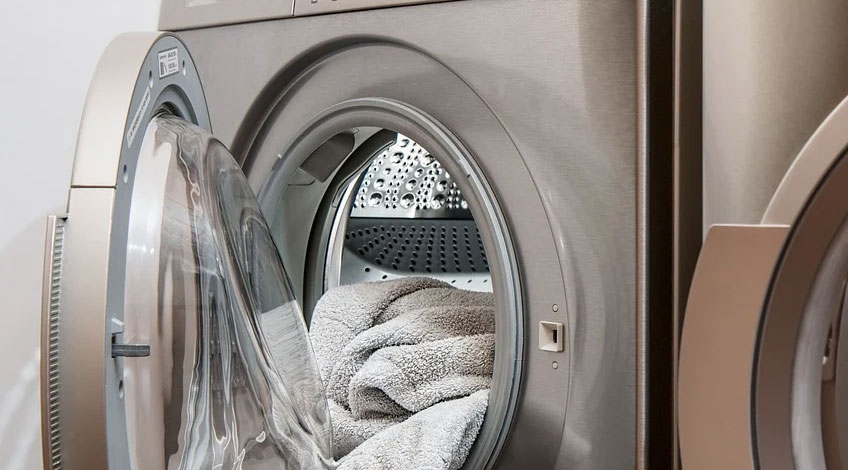
Quick-Dry/Fast-Dry Cycle
The quick dry or fast dry cycle is similar to the warm-up setting because it is a short, high temperature cycle. It is used for drying small loads in a short time.
Just like the warm-up setting, there are certain fabrics that should never be placed on this cycle as they can become damaged through shrinkage, colour fade, or even melting.
Cupboard Dry/Ready To Wear Setting
The idea of this cycle is that you put the laundry in the dryer, select this setting and once it’s completed, the clothes are dry enough to be stored away in a cupboard.
However, this setting often has different temperatures so we wouldn’t recommend using it with delicate fabrics or those items liable to become damaged or wrinkled.
Hanger Dry Setting
This setting is designed for use with those clothes that don’t need ironing. Any light creases will fall out once the garments are hung on a clothes hanger.
Iron Dry Setting
This setting leaves the laundry slightly damp making it easier to iron. You need to iron the laundry as soon as it leaves the dryer for this setting to be effective.
Extra Dry Setting
This setting is suitable for heavy cotton items like bed sheets or towels that need extra drying time. You should only dry items that are robust like cotton or denim as delicate fabrics are liable to become damaged due to the intense heat and long time period of this setting.
Low Heat Setting
Many dryers have this setting which allows you to select a low temperature for drying delicate clothes.
It is a particularly long cycle as the items will take longer to dry with a lower level of heat.
High Heat Setting
The high heat setting is designed for use with robust fabrics like cotton and denim that can handle high temperatures. It should not be used for delicate items like synthetics or silk.
Sensor Dry Setting
This setting allows the appliance to detect the size and weight of the load along with the degree of moisture found in the clothes. It will operate for as long as is needed and then automatically shuts down.
This setting saves you energy and money and it protects your clothes from shrinkage and damage from over drying.
Alarm
Some tumble dryers have this feature that allows you to set an alarm to notify you when the cycle has finished. Not all dryers have this setting so don’t worry if you can’t find it on your appliance.
Sanitise Programme
You should use this programme on clothing from people that work in particularly messy or dirty environments, sportswear or the clothes from people that are ill.
However, as this programme operates at high temperatures to kill germs and bacteria, it is not suitable for all fabrics. It runs at 60 C (140 F) which can be too hot for some materials like delicates or many synthetics.
The high heat produced during this cycle can damage even the more robust fabrics if used too often. Which is why it is only recommended for occasional use. It should be used in conjunction with the sanitary setting on your washer.
Steam Cycle
This cycle sometimes needs the dryer to be plumbed in because it uses water to create steam that gently steams the clothes as they dry. The idea is that once the drying cycle has finished the items need no ironing and can be stored away directly from the dryer.
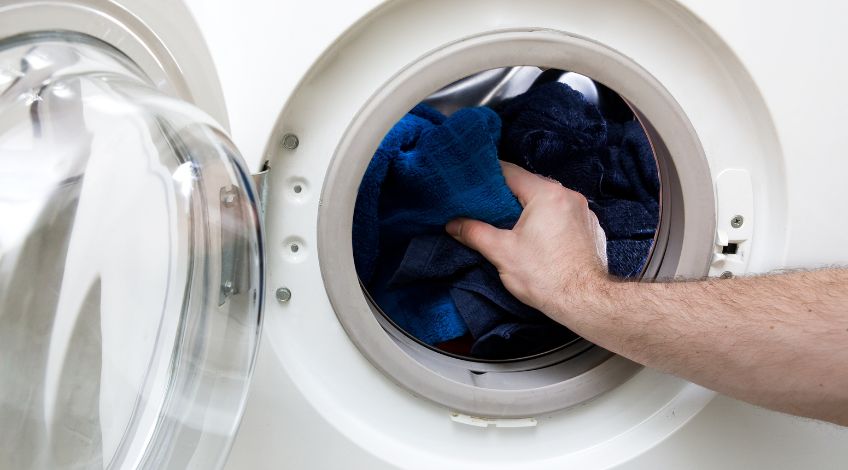
A Brief Guide To The Three Different Types Of Tumble Dryers
If you’re looking to buy a new tumble dryer it would be remiss of us to not give you a short introduction of the 3 types of dryer available on the UK market. Which are;
Vented Tumble Dryers
These were the original dryers and are still popular today. They work by venting the hot moist air from the appliance to the outside of your home.
This is achieved via a vent hose which is typically connected to the front of the appliance and runs through an outside wall or window. These are the most basic of all dryers but are still effective in drying laundry.
They are also the least expensive of the 3 types but typically cost more to operate than either of the other 2.
Condenser Tumble Dryers
These are becoming more and more popular as they don’t need to be sited close to an outside wall or window. The main difference between a condenser dryer and a vented dryer is that the hot air is passed over a condenser which turns it into water which is collected in an onboard water tank which needs emptying after every use.
As there is no hot air escaping the appliance, there is no need for a vent or vent hose which allows condenser dryers to be placed anywhere (within reason).
Heat Pump Tumble Dryers
Heat pump dryers work in much the same way as condenser dryers except that much of the hot air is reused to dry the laundry. This type of dryer is the most energy efficient of the 3 but also the most expensive to buy.
Plus as they only heat the air to around 50 C they take far longer than condenser dryers which heat the air to around 75 C.
SEE ALSO:
- Does The Tumble Dryer’s “Capacity” Mean Dry Or Wet Laundry?
- Does Putting An Ice Cube In The Tumble Dryer Take Out Wrinkles?
Frequently Asked Questions
The actual lowest heat setting on a tumble dryer is the “no heat” setting which operates at room temperature. However, the “low heat” setting operates at around 49 to 50 C (120 to 122 F).
The best dryer setting for towels is generally considered to be the low or medium heat setting. These settings might take longer than the high heat setting but decrease the risk of heat damage and over drying.
The best dryer setting to use to avoid clothes from shrinking is a low or no heat setting coupled with the delicate cycle. It is high heat and rough handling that causes clothes to shrink in a dryer which is why a low heat and gentle cycle is best.
If jeans or denim items are exposed to high heat they are likely to shrink. The best way to dry jeans in a dryer whilst decreasing the risk of them shrinking is to use a low or no heat setting or the dedicated “jeans” setting (if available).


